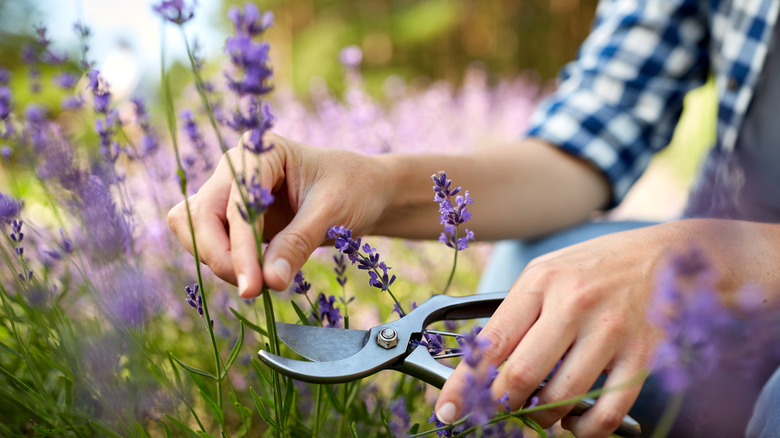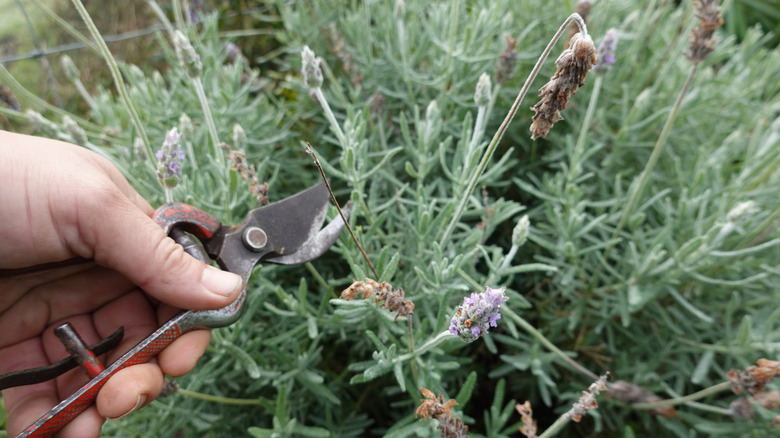Don't Make The Mistake Of Pruning Lavender At The Wrong Time-Here's When To Do It
Lavender adds fragrance, color, and structure to gardens, but pruning it at the wrong time can do more harm than good. This hardy herb thrives when pruned properly, and knowing when to cut makes all the difference in its blooming success. Done right, pruning keeps lavender compact, encourages bushy growth, and promotes a fresh flush of flowers in the next season — or even later in the same year, depending on the variety. Growers want to encourage more blooms on their lavender, and proper pruning supports that.
So, when is the right time to prune? For most varieties, especially English lavender, pruning should be done after the flowers have bloomed and begun to fade. This usually falls in late summer or early fall. Waiting until the blooms are dry allows the plant to complete its flowering cycle while giving it time to recover before cold weather sets in. Some gardeners may also lightly prune after the first bloom in early summer to encourage a second round of flowers.
The ideal cutback height is around 8 inches, just above a group of new green shoots. This encourages vigorous regrowth while avoiding woody stems, which don't regenerate well. Pruning too early in spring can reduce bloom production, while pruning too late can leave the plant vulnerable to frost damage. The best approach is to find the window just after flowering ends and before the chill sets in. With this timing, your lavender will come back stronger, fuller, and more floriferous next year.
How to prune lavender and what to avoid
Pruning lavender properly involves more than just cutting it back. The key is understanding the plant's structure and targeting the right stems. Always use clean, sharp shears, and aim to trim only the flexible green stems, not the woody base. Cutting into old wood is one of the most common mistakes to avoid when pruning lavender. These sections often don't regrow, leaving gaps in the plant or, worse, causing long-term dieback.
The rule of thumb: never remove more than 1/3 of the plant at a time. A modest trim allows the lavender to maintain its shape without stressing the roots. Focus on removing faded blooms, thin stems, and any dead or diseased growth. Clip just above a healthy leaf node or set of green shoots to encourage bushier branching. This is especially important for creating a rounded, uniform shape that resists splitting in high winds or heavy rain.
While some gardeners avoid pruning altogether for fear of harming the plant, skipping this step can lead to woody, leggy growth and fewer blooms. Regular pruning helps lavender stay compact and flower more reliably. If you're combining this with harvesting for crafts or to make lavender essential oil to use in your home, it's a win-win: you get both beauty and utility.

